
Manang: The Hidden Gem of Nepal
Discover Manang: A hidden Himalayan treasure offering breathtaking landscapes, rich culture, and thrilling trekking experiences on the Annapurna Circuit.
Nestled in the heart of the Himalayas, Manang offers a unique blend of natural beauty and cultural richness. This remote village is surrounded by towering peaks, lush forests, and crystal-clear rivers. The backdrop of snow-capped mountains makes Manang a perfect destination for trekking enthusiasts and nature lovers alike. Manang is more than just stunning landscapes; it is also a gateway to the Annapurna Circuit, one of the world's most famous trekking routes. The area is home to a diverse range of flora and fauna, making it a paradise for wildlife photographers and bird watchers. The village itself is steeped in history and culture, with ancient monasteries and traditional Tibetan-style houses providing a glimpse into the local way of life. Visitors to Manang can immerse themselves in the local culture by participating in traditional festivals and ceremonies. The warm hospitality of the locals adds a special touch to the experience. Whether you're trekking through the rugged terrain or simply soaking in the serene atmosphere, Manang promises an unforgettable adventure.
Local tips in Manang
- Altitude acclimatization is crucial. Spend a day or two in Manang to adjust before heading to higher altitudes.
- Visit the local monasteries for a serene experience and a deeper understanding of the region's culture.
- Carry cash, as ATMs and card facilities are limited in this remote area.
- Pack warm clothing, even in summer, as temperatures can drop significantly, especially at night.
- Respect local customs and traditions, particularly when visiting religious sites.
Manang: The Hidden Gem of Nepal
Nestled in the heart of the Himalayas, Manang offers a unique blend of natural beauty and cultural richness. This remote village is surrounded by towering peaks, lush forests, and crystal-clear rivers. The backdrop of snow-capped mountains makes Manang a perfect destination for trekking enthusiasts and nature lovers alike. Manang is more than just stunning landscapes; it is also a gateway to the Annapurna Circuit, one of the world's most famous trekking routes. The area is home to a diverse range of flora and fauna, making it a paradise for wildlife photographers and bird watchers. The village itself is steeped in history and culture, with ancient monasteries and traditional Tibetan-style houses providing a glimpse into the local way of life. Visitors to Manang can immerse themselves in the local culture by participating in traditional festivals and ceremonies. The warm hospitality of the locals adds a special touch to the experience. Whether you're trekking through the rugged terrain or simply soaking in the serene atmosphere, Manang promises an unforgettable adventure.
When is the best time to go to Manang?
Iconic landmarks you can’t miss
Annapurna Conservation Area
Discover the breathtaking Annapurna Conservation Area: a trekking haven with stunning views, diverse wildlife, and rich cultural heritage in the heart of the Himalayas.
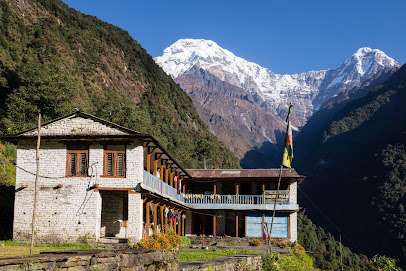
Shree Muktinath Temple
Discover the spiritual and scenic allure of Shree Muktinath Temple, a harmonious blend of Hindu and Buddhist cultures in the heart of the Himalayas.
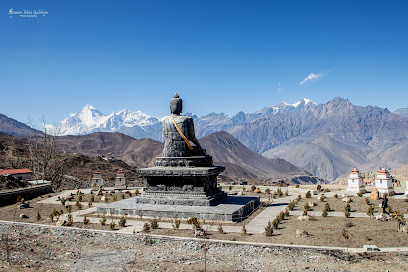
Annapurna Base Camp Trek
Experience the breathtaking beauty of the Himalayas on the Annapurna Base Camp Trek, where adventure meets culture in a stunning landscape.
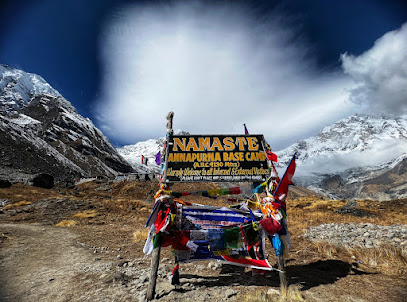
Everest Base Camp
Experience the thrill of adventure at Everest Base Camp, the iconic starting point for treks to the world's highest peak, surrounded by breathtaking Himalayan views.
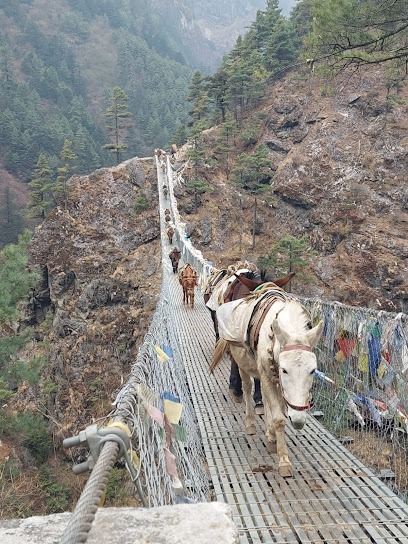
Tilicho Lake
Experience the unrivaled beauty of Tilicho Lake, a Himalayan gem known for its stunning turquoise waters and breathtaking mountain views.
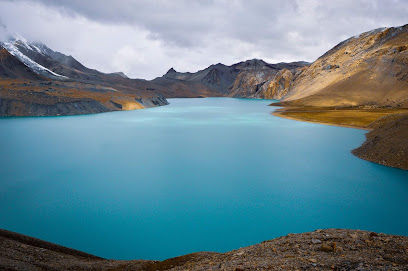
Machhapuchhare
Discover the breathtaking beauty of Machhapuchhare, Nepal's iconic sacred peak, and immerse yourself in nature's majestic wonders.
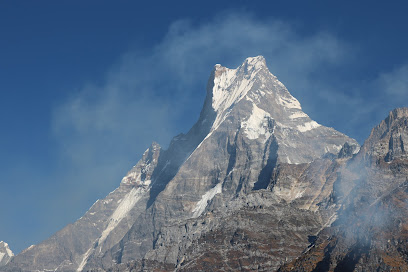
Tengboche Monastery
Experience the tranquility and beauty of Tengboche Monastery, a spiritual gem in the heart of the Himalayas, surrounded by breathtaking mountain views.
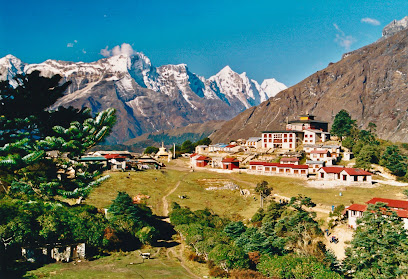
Tilicho Hotel
Discover tranquility and stunning mountain views at Tilicho Hotel in Tanki Manang, your ideal base for Himalayan adventures.

Hotel Yeti, Manang
Discover comfort and warmth at Hotel Yeti in Manang, your perfect retreat in the heart of the Himalayas, surrounded by breathtaking mountain views.

TAAN
Explore the beauty of Nepal with expert insights and resources from TAAN, your essential tourist information center in Kathmandu.
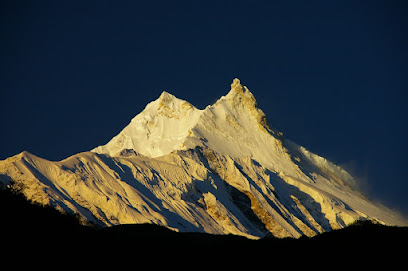
Langtang Trek
Explore the breathtaking Langtang Trek, a Himalayan gem offering stunning views, rich culture, and unforgettable hiking experiences in Nepal.
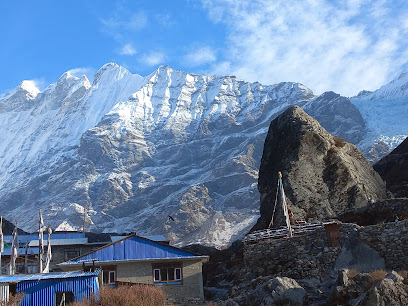
Adventure Great Himalaya Treks & Expedition
Embark on thrilling adventures with Adventure Great Himalaya Treks & Expedition, your premier tour agency in Kathmandu, specializing in hiking and helicopter tours.

Monkey Bunky-3Monkeys Backpacker's Hostel
Experience the vibrant culture of Kathmandu from the cozy Monkey Bunky-3Monkeys Backpacker's Hostel, your ideal base for adventure and exploration.
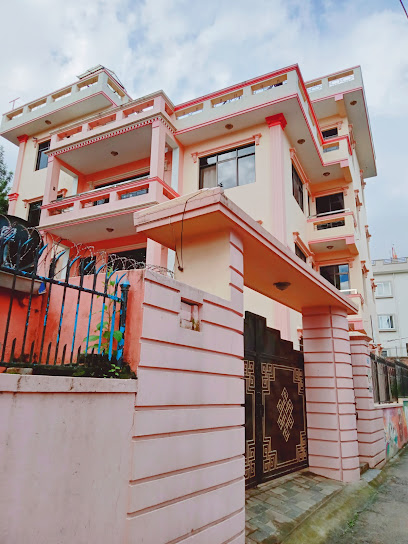
Green Lake
Immerse yourself in the breathtaking beauty of Green Lake, a serene haven in Pisang, Nepal, perfect for nature enthusiasts and adventure seekers.
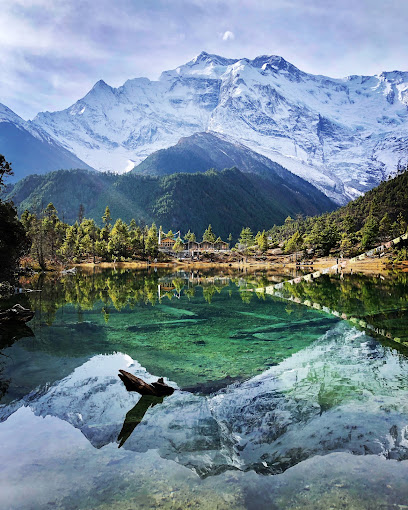
Glorious Himalaya Trekking (P) Ltd.
Discover breathtaking trekking experiences with Glorious Himalaya Trekking, your gateway to the majestic landscapes and rich culture of Nepal's Himalayas.
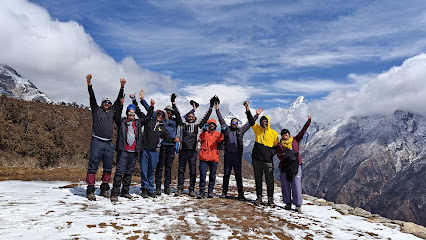
Unmissable attractions to see
Upper Pisang Buddhist Temple
Experience peace and spirituality at Upper Pisang Buddhist Temple, a stunning sanctuary nestled in the breathtaking Annapurna region of Nepal.

Kajin Sara Lake/ singaar lake
Experience the breathtaking beauty of Kajin Sara Lake in Chame, Nepal – a serene escape surrounded by majestic mountains and lush landscapes.

Tanki Manang
Experience the breathtaking landscapes and rich culture of Tanki Manang, a serene tourist attraction in the heart of Nepal's Himalayas.
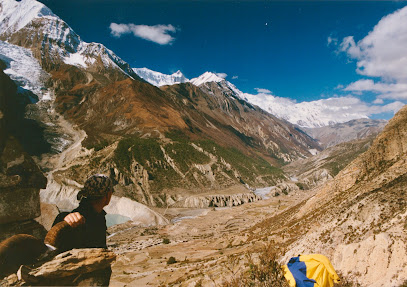
Rising Danda View-point
Discover the stunning panoramas of the Himalayan mountains at Rising Danda View-point, a serene escape in Parche, Nepal.
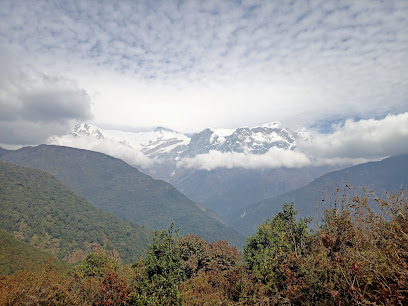
Deepwater fall
Explore the serene beauty of Deepwater Fall in Chame, Nepal – a natural wonder perfect for relaxation and adventure amidst stunning landscapes.

Pisang Himal
Explore Pisang Himal: A hidden gem in the Annapurna region offering breathtaking views, rich culture, and unforgettable trekking experiences.

Tharpu Chuli
Experience the breathtaking beauty of Tharpu Chuli, a stunning peak in the Annapurna region of Nepal, offering unforgettable trekking adventures and cultural encounters.
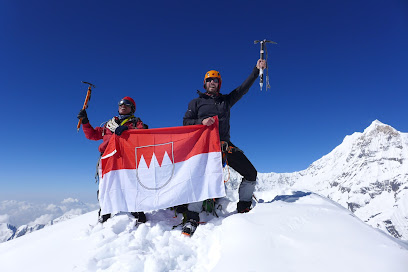
Mini LAKE
Experience the serene beauty of Mini LAKE in Bhraka, Nepal, a tranquil escape surrounded by majestic mountains and lush landscapes.
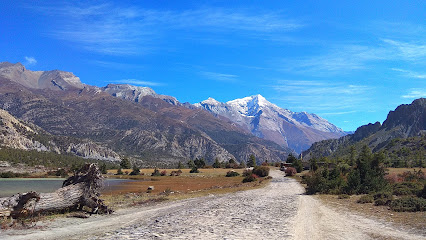
Lamjung Basecamp
Experience the breathtaking views and serene atmosphere at Lamjung Basecamp, your gateway to the majestic Himalayas in Nepal.

Dhukur Pokhari
Discover the serene beauty of Dhukur Pokhari, a hidden gem in the Himalayas perfect for nature lovers and adventure seekers alike.

Milarepa Memorial Park
Explore the serene beauty of Milarepa Memorial Park, a tranquil tribute to Tibetan spirituality amidst the stunning Himalayas.
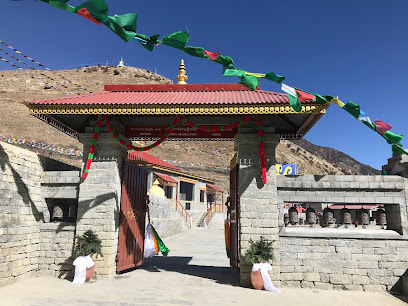
mahendra peak 6176m
Explore the breathtaking vistas and challenging trails of Mahendra Peak, a must-visit destination for adventure seekers in the heart of the Himalayas.
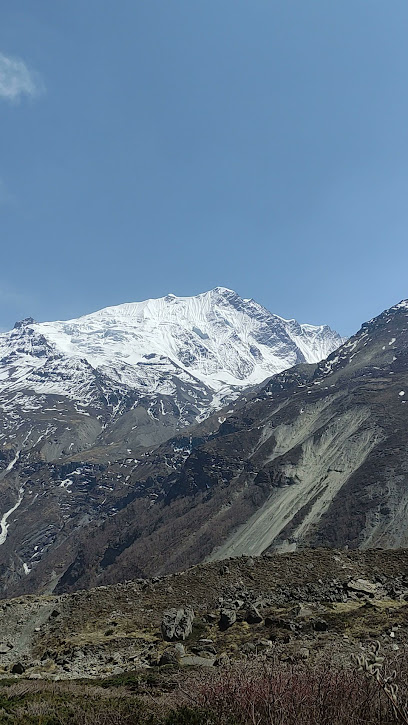
Dendi Sherpa Lookout Point
Discover the stunning views and serene beauty of Dendi Sherpa Lookout Point, a hidden gem in the heart of the Himalayas in Nepal.
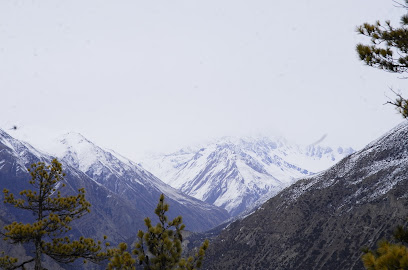
Ice Lake Upper Point
Explore Ice Lake Upper Point: A hidden gem in Nepal offering breathtaking landscapes, serene waters, and an unforgettable trekking experience.
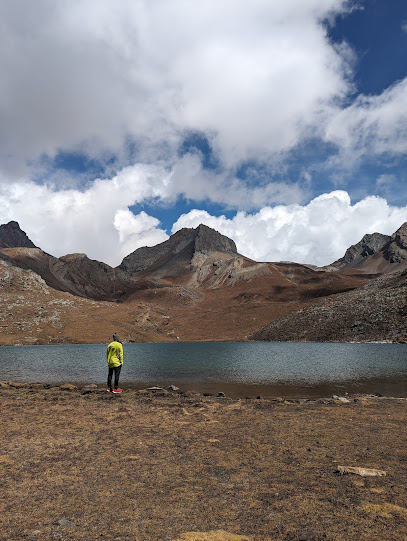
Dukina Rupa
Explore the breathtaking beauty and rich culture of Dukina Rupa in Khangsar, a hidden gem nestled in the heart of the Himalayas.
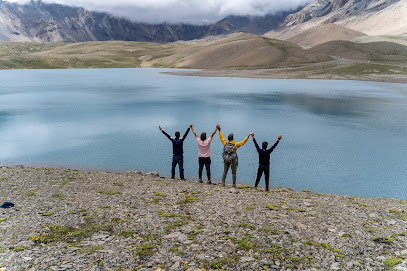
Essential places to dine
Bob's Bistro & Namaste Thakali Kitchen
Discover the essence of Nepali cuisine at Bob's Bistro & Namaste Thakali Kitchen in Besisahar – where tradition meets taste.
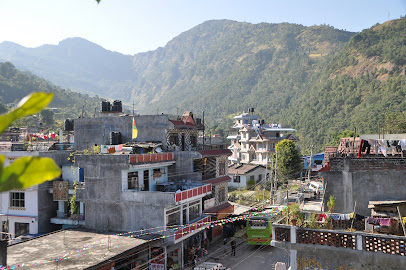
Methlang Food Home (best restaurant)
Experience authentic Nepali flavors at Methlang Food Home in Pokhara - a culinary gem for every food lover.

Annapurna Restaurant Cafe & Bar
Discover delicious local flavors at Annapurna Restaurant Cafe & Bar in Tanki Manang - a must-visit for every traveler in Nepal's breathtaking Himalayas.
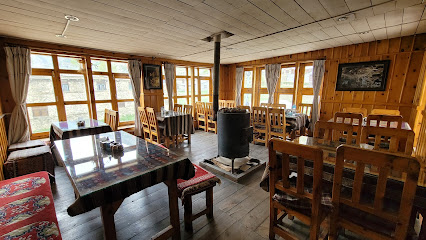
four season guest house &restaurant
Discover comfort and culinary delights at Four Season Guest House & Restaurant in Chame – where local flavors meet hospitality.
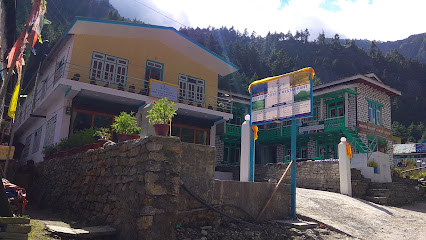
Nirvana Hotel and Restaurant
Experience authentic Nepali cuisine and warm hospitality at Nirvana Hotel and Restaurant in Tanki Manang.
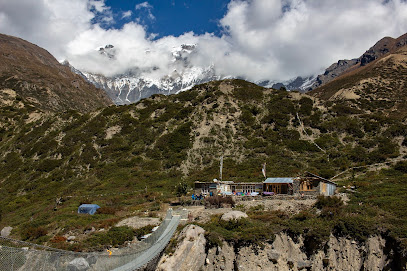
Tip Top Highway restaurant
Discover culinary delights at Tip Top Highway Restaurant while enjoying breathtaking mountain views along Nepal's scenic Besisahar-Chame road.

Hungry Eye Restaurant
Experience authentic Nepali cuisine and breathtaking views at Hungry Eye Restaurant in Nangethanti - a culinary haven for every traveler.
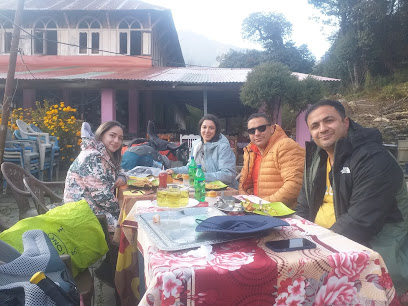
Manang , Braka
Discover the authentic taste of Nepal at this charming restaurant in Braka, nestled in the breathtaking landscapes of Manang.
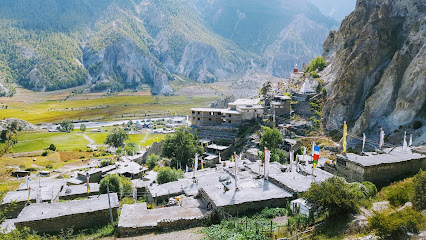
Hiimalayan Restaurant
Experience authentic Nepali cuisine in Khangsar at the Himalayan Restaurant - a culinary journey through flavors and tradition.
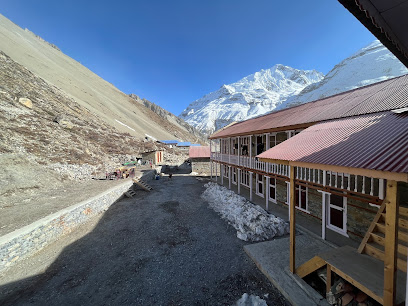
Gyalzen Lodge & Restaurant
Discover authentic Nepali flavors at Gyalzen Lodge & Restaurant in Tanki Manang—where every meal is a journey through Himalayan cuisine.
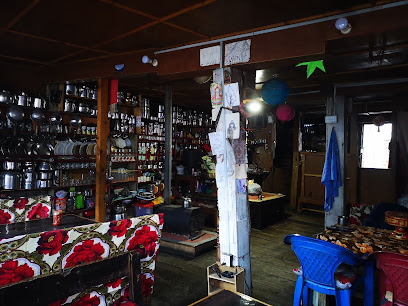
Annapurna Maidi Views & Bipin Cottage
Experience breathtaking mountain views and authentic Nepali cuisine at Annapurna Maidi Views & Bipin Cottage in Lekhnath.
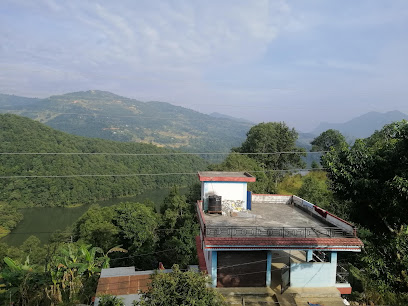
Nishan Lodge
Discover authentic Nepali flavors amidst breathtaking scenery at Nishan Lodge in Kaski.
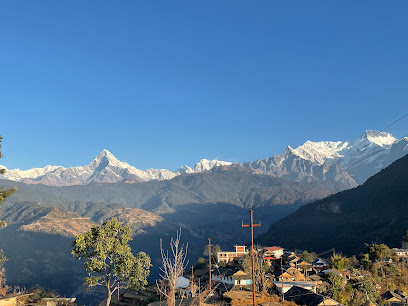
Dipang Adventure Camp
Discover adventure and tranquility at Dipang Adventure Camp in Lekhnath - where nature meets cultural experiences.
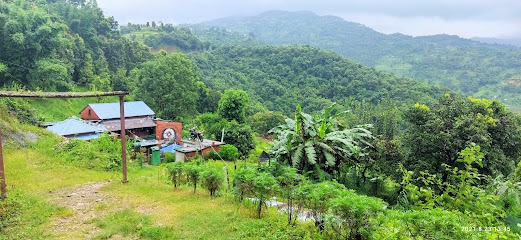
Annapurna hotel restaurant danakyu manang
Experience authentic Nepali cuisine at Annapurna Hotel Restaurant in Danakyu – where flavor meets breathtaking mountain views.
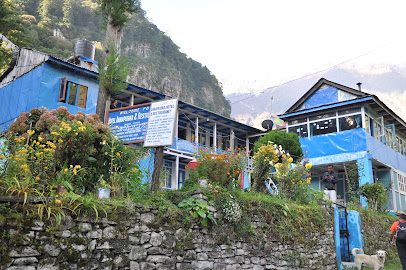
Manang Khaja Ghar
Experience authentic Nepali cuisine at Manang Khaja Ghar in Pokhara - where every dish tells a story.
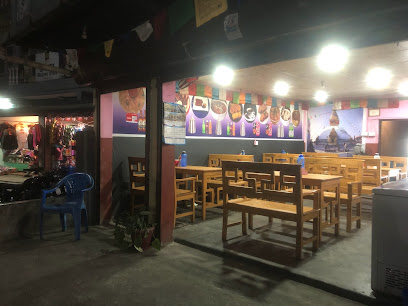
Markets, malls and hidden boutiques
S.K. Handicrafts Export FAIR TRADE Cashmere Company
Discover the finest fair-trade cashmere products at S.K. Handicrafts Export in Kathmandu's vibrant Thamel district, a treasure for ethical shoppers.
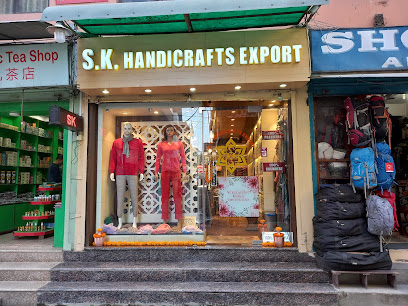
Gorkha Zone Khukuri House
Explore authentic Nepalese gifts at Gorkha Zone Khukuri House in Thamel, featuring traditional Khukuri knives and more.
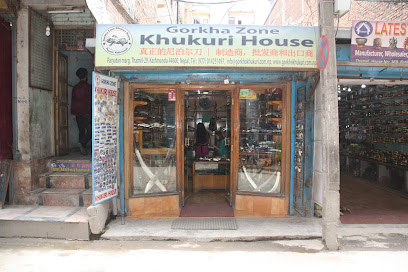
Maa Computer Mejorganj
Explore the latest in electronics at Maa Computer Mejorganj, a tech haven in Namarjung, Nepal, perfect for all your gadget needs.

Annapurna trekking shop
Explore the Annapurna region with confidence - gear up at the Annapurna Trekking Shop in Manang, your adventure starts here!
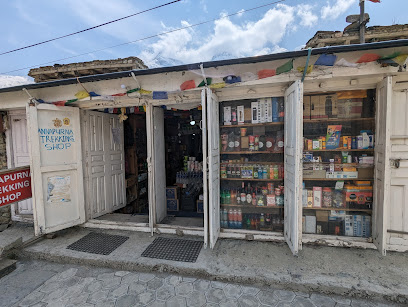
Maina Stores
Maina Stores: Your go-to grocery shop in Pokhara for fresh produce, local snacks, and all your travel essentials.
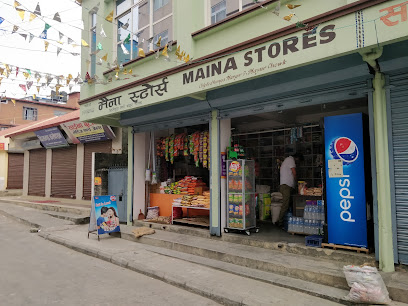
Nepal Kathmandu Pokhara
Experience the spiritual journey through Kathmandu and Pokhara, where culture and nature intertwine in the heart of Nepal.
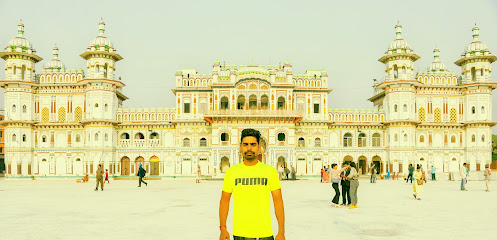
Renu tailoring center रेनु टेलरिङ्ग सेन्टर
Experience exceptional craftsmanship at Renu Tailoring Center in Beni, where custom-tailored garments reflect the rich culture of Nepal.

Karma shop
Experience the local charm and unique offerings at Karma Shop in Bhraka, a must-visit destination for tourists exploring Nepal's stunning landscapes.

AHAMAD TENT AND FANCY STORE
Explore the vibrant styles of Ahamad Tent and Fancy Store in Namarjung, where traditional charm meets contemporary fashion.
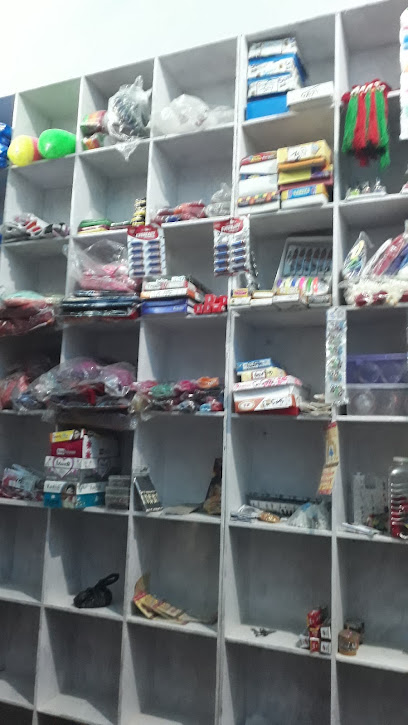
जितमन राइस् मिल
Discover unique home goods at जितमन राइस् मिल in Namarjung, a perfect spot for tourists seeking authentic souvenirs and quality craftsmanship.
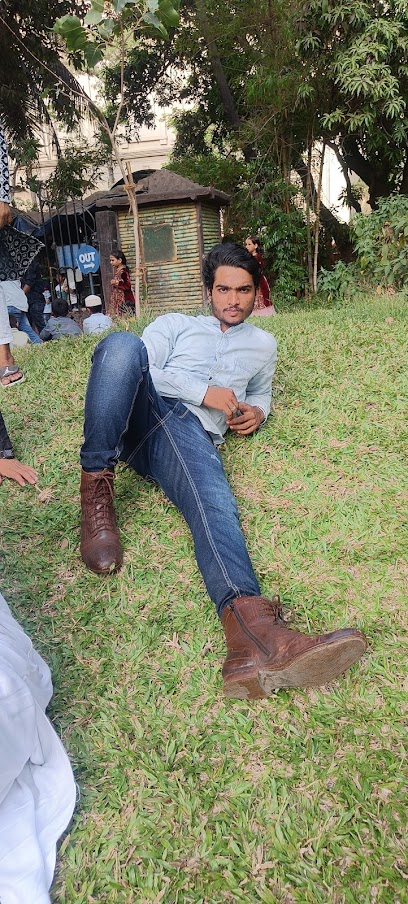
Sagar room
Explore the artistry of Nepalese bedroom furniture at Sagar Room in Namarjung, where craftsmanship meets culture.

Rabindra general store
Experience the local charm at Rabindra General Store in Lakhanchouk, where unique treasures and friendly faces await every visitor.

Manokamana fancy stores
Discover unique fashion at Manokamana Fancy Stores, Pokhara's top clothing destination for tourists seeking authentic Nepali style.

chasma ghar beni ghadi showroom beni
Discover unique fashion accessories at Chasma Ghar in Beni, where local craftsmanship meets contemporary style for an unforgettable shopping experience.
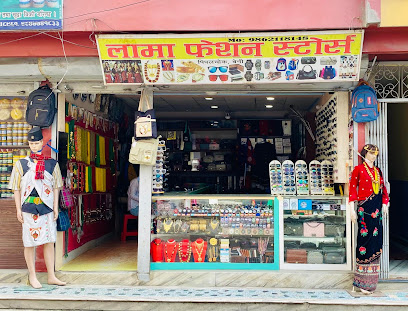
Bastola Kirana Pasal
Immerse yourself in Namarjung's local culture at Bastola Kirana Pasal, where authentic Nepali flavors come to life in every aisle.

Essential bars & hidden hideouts
Annapurna Restaurant Cafe & Bar
Discover authentic Nepalese flavors at Annapurna Restaurant Cafe & Bar in Tanki Manang, where warm hospitality meets breathtaking mountain views.
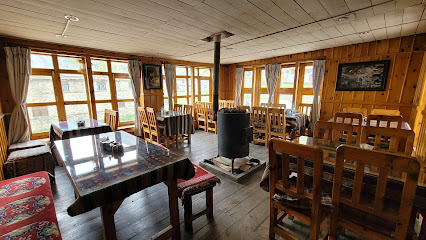
Manang
Explore the breathtaking village of Manang, where culinary delights meet stunning Himalayan views in the heart of Nepal.
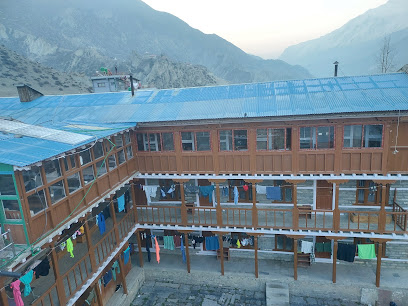
Lamahi Dang
Experience the lively atmosphere of Lamahi Dang, a vibrant bar in Namarjung where locals and tourists come together to unwind and socialize.
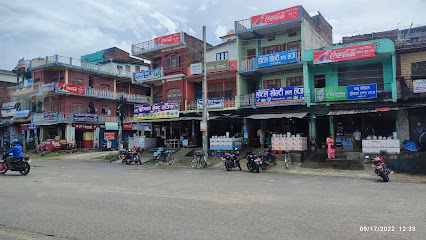
Tibetan kitchen Manang
Discover the rich flavors of Tibetan cuisine in the heart of Manang at Tibetan Kitchen, a must-visit for every food-loving traveler.

Dukki Restaurant & Cottage
Savor authentic Nepali cuisine in a cozy atmosphere at Dukki Restaurant & Cottage, the culinary highlight of Tanki Manang for travelers.

TT ministar
Discover the lively ambiance and local spirit at TT ministar, the ideal bar for unwinding in Sardi Khola with friends and new acquaintances.

Tsering Restaurant & Bar
Experience authentic Nepali cuisine with stunning views at Tsering Restaurant & Bar in Bhraka, a culinary destination for every traveler.

Mamta
Discover Mamta, a serene bar in Namarjung offering a delightful selection of drinks and a warm atmosphere for unwinding.

Tanki Manang
Experience the rich flavors of authentic Nepalese cuisine at Tanki Manang, a culinary gem for all food lovers.
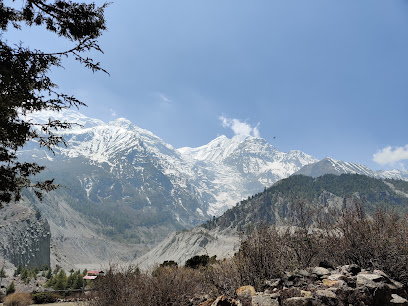
Koshi
Experience the vibrant nightlife at Koshi, a bar in Namarjung offering delightful drinks and a cozy atmosphere for every traveler.

Vasandhara choki
Experience the vibrant nightlife and local culture at Vasandhara Choki, a premier bar in Namarjung, Nepal, perfect for unwinding and socializing.

Sumit giri
Experience the vibrant nightlife and local flavors at Sumit Giri Bar in Namarjung, a must-visit destination for travelers seeking authentic Nepalese culture.

Chakwa 4 yekdara
Discover the vibrant nightlife at Chakwa 4 Yekdara, a lively bar in Namarjung offering an authentic taste of local culture and a wide selection of drinks.

Hi ulti arlangkot nepal
Experience the lively spirit of Hi Ulti Arlangkot in Namarjung, Nepal, where local flavors and vibrant culture come together in a cozy bar setting.

chhotu Rk
Discover Chhotu Rk, a vibrant bar in Namarjung offering a blend of local drinks, culture, and a welcoming atmosphere for all visitors.

Local Phrases about Manang
-
- Helloनमस्ते
[namaste] - Goodbyeफेरि भेटौं
[pheri bhetou] - Yesहो
[ho] - Noहोइन
[hoin] - Please/You're welcomeकृपया/स्वागत छ
[krupaya/swagat cha] - Thank youधन्यवाद
[dhanyabad] - Excuse me/Sorryमाफ गर्नुहोस्
[maaf garnuhos] - How are you?तपाईंलाई कस्तो छ?
[tapailai kasto cha?] - Fine. And you?राम्रो छ। तिमीलाई?
[ramro cha. timilai?] - Do you speak English?तिमी अंग्रेजी बोल्नुहुन्छ?
[timi angreji bolnuhunchha?] - I don't understandमैले सम्झिन
[maile samjhin]
- Helloनमस्ते
-
- I'd like to see the menu, pleaseकृपया मेनु हेर्न चाहन्छु
[krupaya menu hern chaahanchu] - I don't eat meatम मासु खाँदिन
[ma masu khandin] - Cheers!चियर्स!
[cheers!] - I would like to pay, pleaseकृपया भुक्तानी गर्न चाहन्छु
[krupaya bhuktani garn chaahanchu]
- I'd like to see the menu, pleaseकृपया मेनु हेर्न चाहन्छु
-
- Help!मदद!
[madad!] - Go away!दूर जानुहोस्!
[door januhos!] - Call the Police!पुलिसलाई बोलाउनुहोस्!
[polis lai bolaunuhos!] - Call a doctor!एक डाक्टरलाई बोलाउनुहोस्!
[ek doctor lai bolaunuhos!] - I'm lostमलाई हेर्न सक्दैन
[malai hern sakdain] - I'm illमलाई बिमारी छ
[malai bimari cha]
- Help!मदद!
-
- I'd like to buy...म किन्न चाहन्छु...
[ma kinn chaahanchu...] - I'm just lookingम सिर्जना गर्दैछु
[ma sirjana gardaichu] - How much is it?यो कति हो?
[yo kati ho?] - That's too expensiveयो धेरै महँगो छ
[yo dherai mahango cha] - Can you lower the price?के तपाईं मुल्य कम गर्न सक्नुहुन्छ?
[ke tapailai mulya kam garn saknuhunchha?]
- I'd like to buy...म किन्न चाहन्छु...
-
- What time is it?कति बज्यो?
[kati bajyo?] - It's one o'clockबज्यो एक
[bajyo ek] - Half past (10)दसबज्या सम्मको समय
[das bajya sammako samaya] - Morningबिहान
[bihaan] - Afternoonदिउँसो
[diunso] - Eveningसाँझ
[saanjh] - Yesterdayहिजो
[hijo] - Todayआज
[aaj] - Tomorrowभोलि
[bholi] - 1एक
[ek] - 2दुई
[dui] - 3तीन
[tin] - 4चार
[chaar] - 5पाँच
[paanch] - 6छ
[chha] - 7सात
[saat] - 8आठ
[aath] - 9नौ
[nau] - 10दश
[dash]
- What time is it?कति बज्यो?
-
- Where's a/the...?...कहाँ छ?
[...kaha chha?] - What's the address?ठेगाना के हो?
[thegana ke ho?] - Can you show me (on the map)?के तिमीले मलाई देखाउन सक्नुहुन्छ?
[ke timile malai dekhaun saknuhunchha?] - When's the next (bus)?अर्को कति बज्यो?
[arko kati bajyo?] - A ticket (to ....)एक टिकट (... सम्म)
[ek ticket (... samm)]
- Where's a/the...?...कहाँ छ?
History of Manang
-
Manang, nestled in the heart of the Annapurna region, has been a vital node on the ancient salt trade route between Tibet and Nepal. For centuries, traders traversed these rugged paths, exchanging salt, wool, and other goods. This trade route not only fostered economic interactions but also cultural exchanges that have shaped the unique heritage of Manang.
-
The Manang Valley has been inhabited for over a millennium. It is believed that the initial settlers were Tibetan refugees who fled religious persecution and harsh climatic conditions. These early settlers laid the foundations for the intricate network of villages that dot the valley today, each with its own distinct customs and traditions.
-
Tibetan Buddhism has profoundly influenced the spiritual landscape of Manang. The valley is home to several ancient monasteries, such as the Braga Monastery, which dates back over 500 years. These monasteries are not only places of worship but also cultural repositories that preserve ancient texts, traditional arts, and the monastic way of life.
-
In the 15th century, the Kingdom of Lo, also known as Mustang, exerted considerable influence over the Manang region. This period saw the construction of fortresses and the consolidation of trade routes. The political and cultural influences of the Kingdom of Lo remain evident in the architecture and local governance practices of Manang.
-
The advent of modern trekking in the mid-20th century transformed Manang from a secluded valley into a bustling hub for adventurers. The Annapurna Circuit, one of the world's most popular trekking routes, passes through Manang. This influx of trekkers has brought economic benefits, leading to the development of infrastructure while also posing challenges to the preservation of traditional lifestyles.
-
Recognizing the ecological and cultural significance of Manang, various conservation efforts have been initiated. The Annapurna Conservation Area Project (ACAP), established in 1986, aims to balance environmental conservation with sustainable tourism. These efforts are crucial in preserving the natural beauty and cultural heritage of Manang for future generations.
Manang Essentials
-
Manang is located in the Annapurna region of Nepal. The nearest major airport is Tribhuvan International Airport in Kathmandu. From Kathmandu, you can take a domestic flight to Pokhara, which is the gateway to the Annapurna region. From Pokhara, you can either take a bus or a jeep to Besisahar, and then another jeep to Chame, from where the trekking route to Manang begins. Alternatively, you can directly take a helicopter from Kathmandu to Manang, which is a quicker but more expensive option.
-
Manang is a trekking destination, so the primary mode of transportation within the region is on foot. However, for those who need it, local jeeps are available for hire to navigate the rough terrains. These jeeps can take you to nearby villages and starting points of various trekking routes. There are no public buses within Manang itself, but local transportation options are available in bigger towns like Chame and Besisahar.
-
The official currency in Nepal is the Nepalese Rupee (NPR). It is advisable to carry enough cash with you, as there are no ATMs in Manang. Credit cards are generally not accepted in smaller establishments, guesthouses, and teahouses along the trekking routes. You can exchange foreign currency at banks and exchange counters in Kathmandu and Pokhara before heading to Manang.
-
Manang is generally safe for tourists, but it is essential to take standard precautions. Avoid trekking alone, especially in remote areas. It is advisable to hire a local guide or join a trekking group. Be mindful of altitude sickness, which is common in high-altitude regions like Manang. There are no specific high-crime areas targeting tourists, but always remain vigilant and secure your belongings.
-
In case of emergency, the nearest medical facilities are available in Manang village, which has a basic health post. For severe cases, you may need to evacuate to Kathmandu or Pokhara. It is highly recommended to have travel insurance that covers emergency evacuation and medical expenses. For immediate assistance, you can contact the local police or your embassy in Kathmandu.
-
Fashion: Do dress modestly, especially when visiting monasteries and religious sites. Avoid wearing revealing clothing. Religion: Do respect local customs and traditions. Always ask for permission before taking photos in religious sites. Public Transport: Do be patient, as local transportation can be unpredictable. Don't expect punctuality. Greetings: Do greet people with a 'Namaste' by joining your palms together. A smile and a slight bow are also appreciated. Eating & Drinking: Do try local dishes like Dal Bhat and Momos. Don't waste food, as it is considered disrespectful.
-
To experience Manang like a local, engage with the local community and participate in cultural activities. Visit the local markets to buy traditional handicrafts and local produce. Attend local festivals like the Yartung festival, which is celebrated with horse racing and traditional dances. Don't miss visiting the ancient Braga Monastery and the beautiful Gangapurna Lake for a serene experience.
Trending Landmarks in Manang
-
Annapurna Conservation Area
-
Shree Muktinath Temple
-
Annapurna Base Camp Trek
-
Everest Base Camp
-
Tilicho Lake
-
Machhapuchhare
-
Tengboche Monastery
-
Tilicho Hotel
-
Hotel Yeti, Manang
-
TAAN
-
Langtang Trek
-
Adventure Great Himalaya Treks & Expedition
-
Monkey Bunky-3Monkeys Backpacker's Hostel
-
Green Lake
-
Glorious Himalaya Trekking (P) Ltd.











